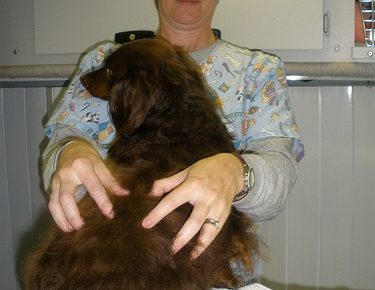Arsenic is a steel-gray element with a metallic luster. It vaporizes in liquid and can form a number of poisonous compounds. Inorganic arsenic is found in herbicides, insecticides, wood preservatives, some insulation and more. Organic arsenic is usually found in heartworm treatments and preventives.
Symptoms of arsenic poisoning can occur suddenly up to 24 hours after ingestion. If your pet is exposed to arsenic over a long period of time, it can become cumulative with high levels found in the liver and kidneys. Depending on length of exposure, it can collect in skin, nails, fur and sweat glands.
Signs of arsenic poisoning include drooling, nausea, vomiting, severe abdominal pain, bloody diarrhea with mucous, muscle weakness, tremors, staggering, severe dehydration, shock, paralysis, coma followed by death.
If you can, induce vomiting. Go to the vet or emergency clinic immediately as early treatment is vital. If available, take a sample of the product ingested and/or a stool sample. Your vet will take blood tests, urinalysis, continue to induce vomiting, perform gastric lavage (stomach irrigation), administer charcoal to absorb toxins, IV fluids to hydrate, medications to relieve pain and protect the GI tract and other medications such as dimercaprol which is an arsenic antidote. There are other agents that can be administered which bind heavy metals and can remove arsenic from the body.
Your pet will likely have to remain hospitalized for several days to continue treatment until s/he is stabilized. Prognosis is poor unless treatment begins early before toxicity advances.
You can help avoid arsenic poisoning by following some guidelines. DO NOT leave any materials containing arsenic where your pet can reach them. If you are unsure, read labels or contact Poison Control for information. DO NOT use herbicides or insecticides in your garden or home. DO NOT allow your pet to roam freely into other people’s gardens where products containing arsenic may be used. It could mean the difference between the life and death of your pet.


